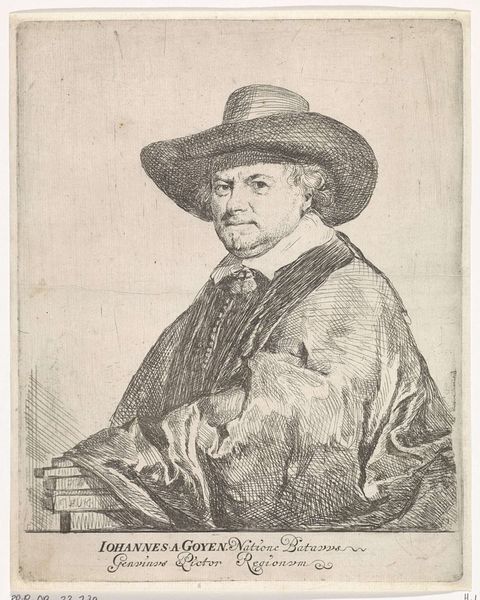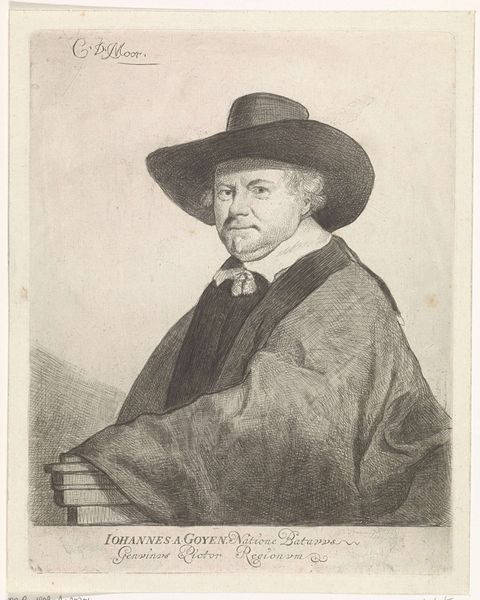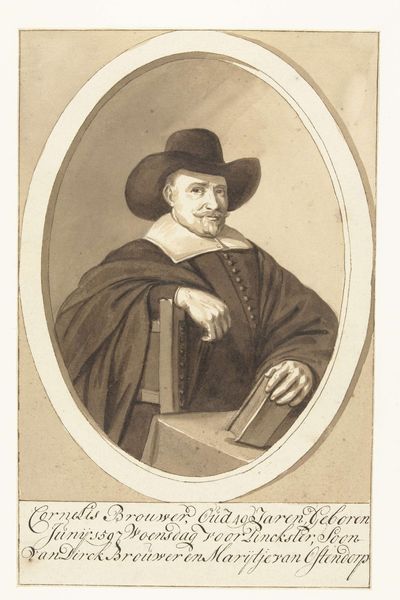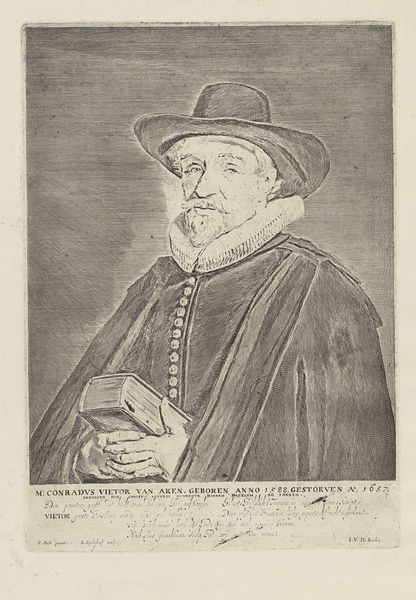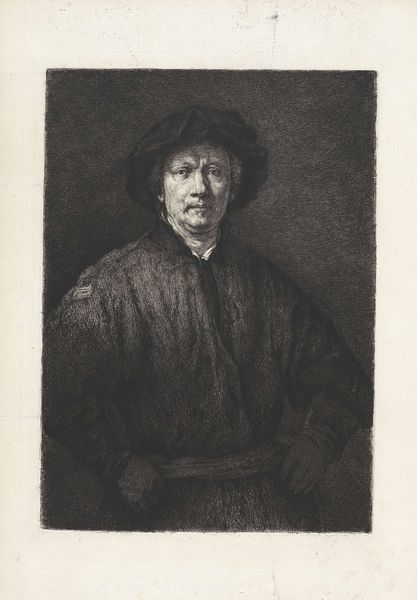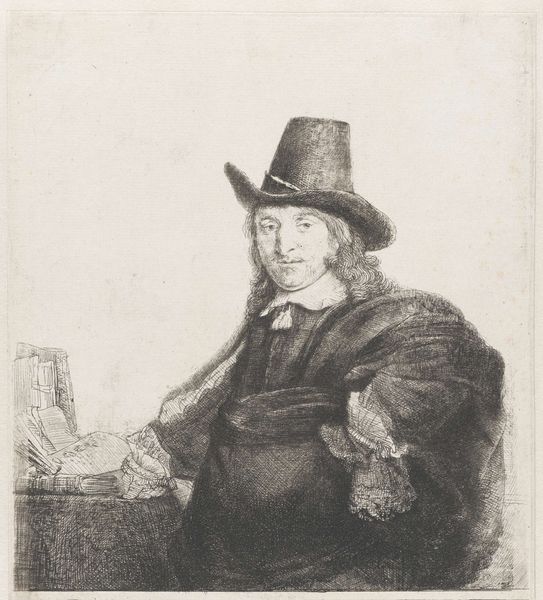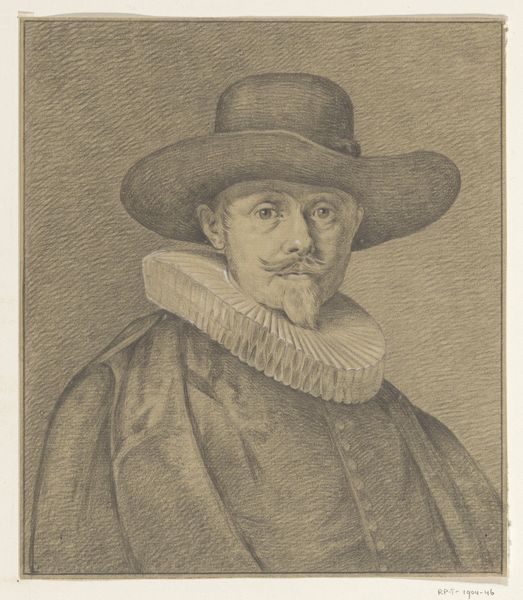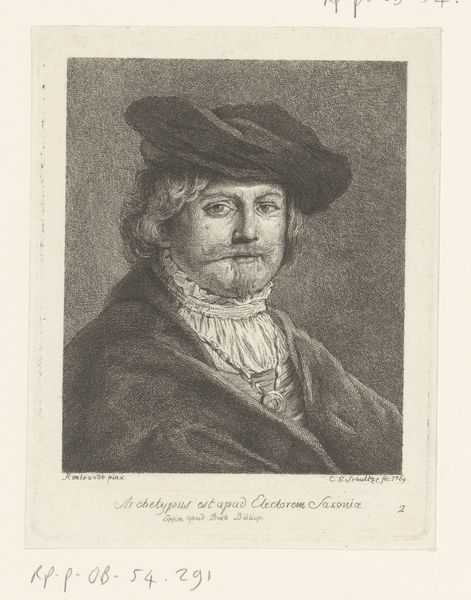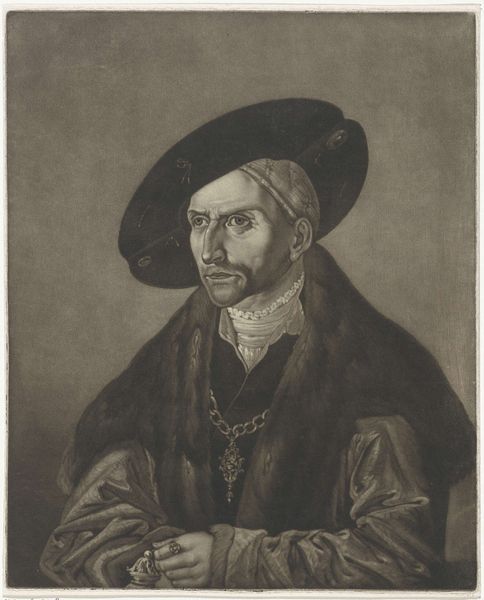
drawing, etching, ink, engraving
#
portrait
#
pencil drawn
#
drawing
#
baroque
#
dutch-golden-age
#
etching
#
charcoal drawing
#
ink
#
pencil drawing
#
engraving
Dimensions: height 218 mm, width 171 mm
Copyright: Rijks Museum: Open Domain
Curator: Welcome. Here we have a compelling print, "Portret van Jan van Goyen," dating sometime between 1665 and 1738, created by Carel de Moor II. It's currently held here at the Rijksmuseum. Editor: My initial impression is of remarkable tonal range within such limited material. The figure emerges from a rather brooding darkness with subtle gradations. It's as though light is being sculpted onto the paper. Curator: Indeed. De Moor masterfully manipulates line and tone to create depth. Note how the subject’s gaze meets ours, anchoring us in the composition. The carefully etched lines delineate form, especially in the details of van Goyen’s face and clothing, establishing a clear visual hierarchy. Editor: Speaking of materials, it appears to be some form of etching and engraving, perhaps with ink additions? We should remember that printmaking at this time involved significant labor – the physical act of incising the plate, preparing the inks. It's far from the dematerialized image we're used to today. This process affects how we perceive not just value, but also skill, making visible the means by which an image is produced. Curator: Absolutely. Consider, too, how the materiality and process directly contribute to its meaning. The controlled, meticulous process aligns with the prevailing aesthetic values, while the formal elements guide the viewer's experience. The etching as a multiple allowed the subject, another artist to reach a broader audience. Editor: Which shifts our focus from artistic skill and taste towards broader socioeconomic structures that impact production, distribution, and consumption of imagery during the Dutch Golden Age. Think about guilds, workshops, materials sourcing. What class or social strata consumed prints like this one of Van Goyen? Curator: Certainly. These economic factors helped enable De Moor’s artistic activity, creating a reciprocal relationship of artist to subject to consumer. Editor: Ultimately, beyond artistic and commercial aspects, its tactile quality grounds us in the historical reality of its making, offering a palpable link to its moment in time. Curator: I agree. Examining the engraving from both our perspectives helps illuminate its intrinsic visual dynamics alongside its broader historical circumstances, thereby enriching our understanding.
Comments
No comments
Be the first to comment and join the conversation on the ultimate creative platform.
